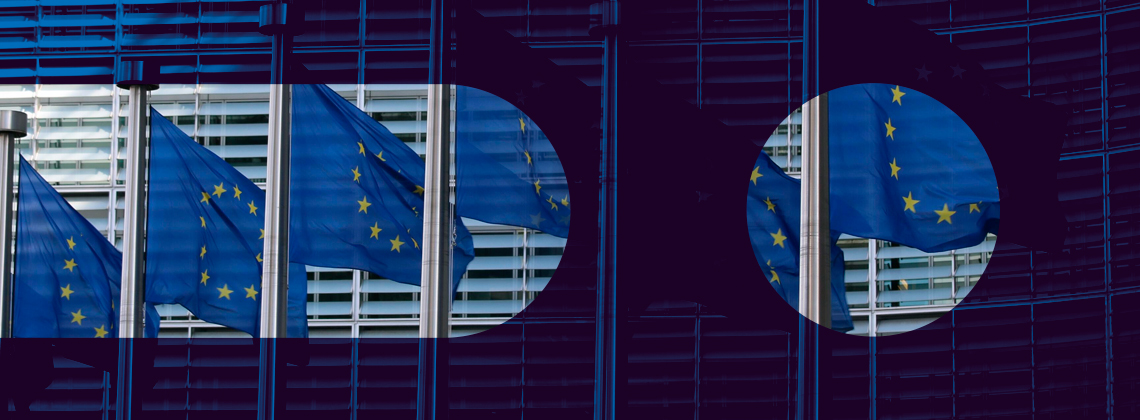News analysis
The ESG landscape in Europe

The political will for ESG (environmental, social and governance) in Europe continues to grow, and for the moment at least, it’s all centred around regulation.
European countries are moving ahead with plans to transform ESG. They want to move it from being a broad, sometimes chaotic and confusing set of principles to a concise collection of standards – easy to follow and report on.
How does ESG land in Europe?
Europe welcomes ESG.
In other parts of the world – particularly America – ESG has come under persistent fire from fiscal conservatives who don’t believe in its value and criticise the restrictions it places on the markets.
They dismiss the movement as too “woke” and say it will harm ordinary American taxpayers, who won’t see the maximum returns on their investments. In some states, such as Louisiana, Texas and Florida, that criticism has already turned to action – as investment funds prioritising ESG have been blacklisted by lawmakers.
If such movements exist in Europe, they will have a hard time pushing against the tides around them because Europe’s lawmakers – and the voters who back them – embrace ESG values and want them to continue.
Europe as an ESG powerhouse
Europe has some of the most thorough laws around ESG in the world, fuelled by:
- A strong respect for transitioning to a net-zero economy
- Multiple high-profile corporate scandals, such as the Danske laundering saga and Wirecard, have spurred a reactionary drive for good governance.
- Commitment to workers’ rights, diversity and welfare principles.
And while there may be some differences in approach between the EU and UK after Brexit, the underlying theme is the same: “we need to intervene and innovate if we are to create sustainable businesses of the future”.
The EU
Europe’s latest ESG stride is the Sustainable Finance Disclosures Regulation (SFDR).
In 2021 it came into force, and earlier this year, the European Commission published more detailed “technical standards” so stakeholders had an easier time following them.
The Commission says SFDR will:
- Increase transparency
- Reduce greenwashing
- Strengthen the integrity of the sustainable investment product market.
SFDR requires asset managers to disclose how their activities connect with ESG values, if at all. And when providing these disclosures, managers must use a uniform standard, which lawmakers hope will bring clarity to a sector plagued by vague ideals and disjointed metrics.
SFDR is less than two years old, and critics have commented that in the time it has been active, it has caused its fair share of confusion.
Different categories of investing exist within SFDR, distinguished by how much connection they have to do with ESG. But investors haven’t been clear on which category is best for them – pulling money from one and into another once they realise their priorities.
Nevertheless, the EU’s approach to ESG has been described as “the most stringent ESG reporting regime” among some of the world’s most dynamic economies “in terms of breadth, coverage, and assurance.”
The UK
The British government is broadly planning on following the EU’s standards or at least using its model as a template.
The UK has ambitious plans for environmental and social sustainability. It has also been a leader in the corporate governance space for decades – going back to the release of the first corporate governance code in 1998 – itself used as a template worldwide.
“The financial sector has an important role to play in helping the transition to a net zero economy and a more sustainable long-term future,” the country’s Financial Conduct Authority (FCA) said earlier this year.
“We also want to embed our environmental, social and governance (ESG) work across the FCA to support the financial sector in driving positive change in these areas.”
The watchdog warned, however, that a lot of work was still needed to turn goals into reality. For example, it stressed the need for “high-quality information, a well-functioning ecosystem and clear standards,” – much the same as its EU counterparts.
“And consumers need to be able to rely on firms to take ESG seriously, avoid ‘greenwashing’ and deliver on their ESG promises,” it concluded.
In summary
On both sides of the Atlantic, there are pro and anti-ESG elements. The difference between the two is the side that makes the most noise.
For now, that side is the anti-ESG contingent in the US, running with support from the Republican Party and many prominent businesspeople.
In the EU, the pro-ESG side’s impact is being felt. It has the backing of a Commission and Parliament representing nearly 450 million people, in addition to like-minded non-EU states.
Such enthusiasm will be hard to ignore or work against.




